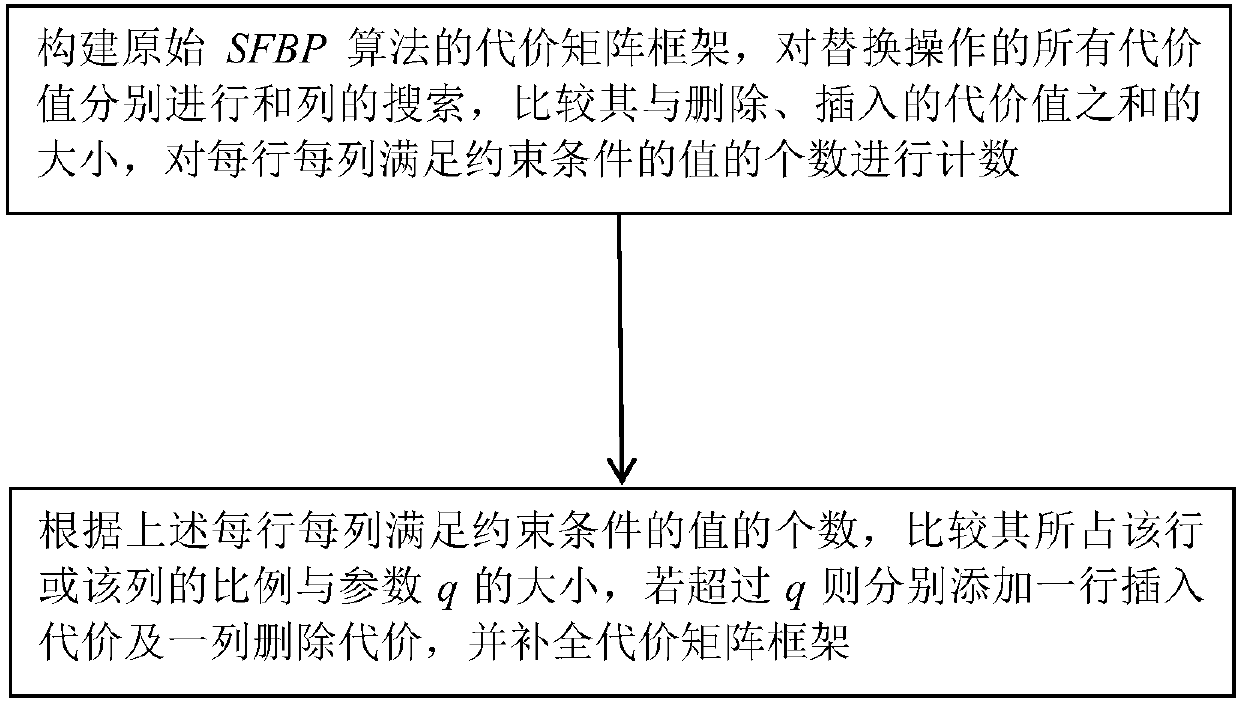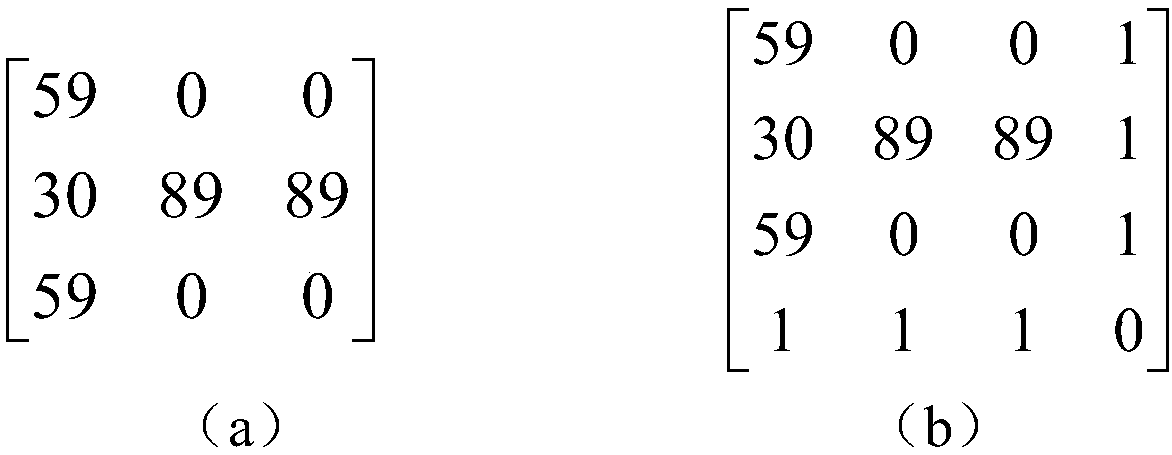Graph editing distance solving method for letter recognition
A graph edit distance, edit distance technology, applied in the field of graph edit distance, to achieve a good practical effect
- Summary
- Abstract
- Description
- Claims
- Application Information
AI Technical Summary
Problems solved by technology
Method used
Image
Examples
Embodiment 1
[0041] A graph edit distance method for letter recognition, including the following steps:
[0042] The first step is to construct the cost matrix framework of SFBP algorithm.
[0043]Step 11. Use the relevant algorithm to extract the features of any two letters as graph data. Assume that the number of vertices of the two graph data obtained is a and b respectively, each vertex has a digital label, and the edge structure between vertices is undirected and unlabeled. For the convenience of description, according to the number of vertices in the graph, the graphs are called a graph and b graph respectively.
[0044] Step 12. Set the insert operation cost value C i and delete operation cost C d . Set insert operation cost value C i and delete operation cost C d Can be the same or different depending on the point label value.
[0045] Step 13: Use the Euclidean distance method to calculate the label distance of all vertices between the two graphs, and the obtained label dis...
Embodiment 2
[0063] The method of the second embodiment is substantially the same as that of the first embodiment, the difference is that, in the first embodiment, after calculating the number of cost values that satisfy the constraints in each row and each column, these cost values are replaced by positive infinity at the same time,
[0064] Another graph edit distance method for letter recognition includes the following steps:
[0065] Step 1. Construction of the cost matrix framework of SFBP algorithm.
[0066] Step 11. Use the relevant algorithm to extract the features of any two letters as graph data. Assume that the number of vertices of the two graph data obtained is a and b respectively, each vertex has a digital label, and the edge structure between vertices is undirected and unlabeled. For the convenience of description, according to the number of vertices in the graph, the graphs are called a graph and b graph respectively.
[0067] Step 12. Set the insert operation cost v...
PUM
 Login to View More
Login to View More Abstract
Description
Claims
Application Information
 Login to View More
Login to View More - R&D
- Intellectual Property
- Life Sciences
- Materials
- Tech Scout
- Unparalleled Data Quality
- Higher Quality Content
- 60% Fewer Hallucinations
Browse by: Latest US Patents, China's latest patents, Technical Efficacy Thesaurus, Application Domain, Technology Topic, Popular Technical Reports.
© 2025 PatSnap. All rights reserved.Legal|Privacy policy|Modern Slavery Act Transparency Statement|Sitemap|About US| Contact US: help@patsnap.com



